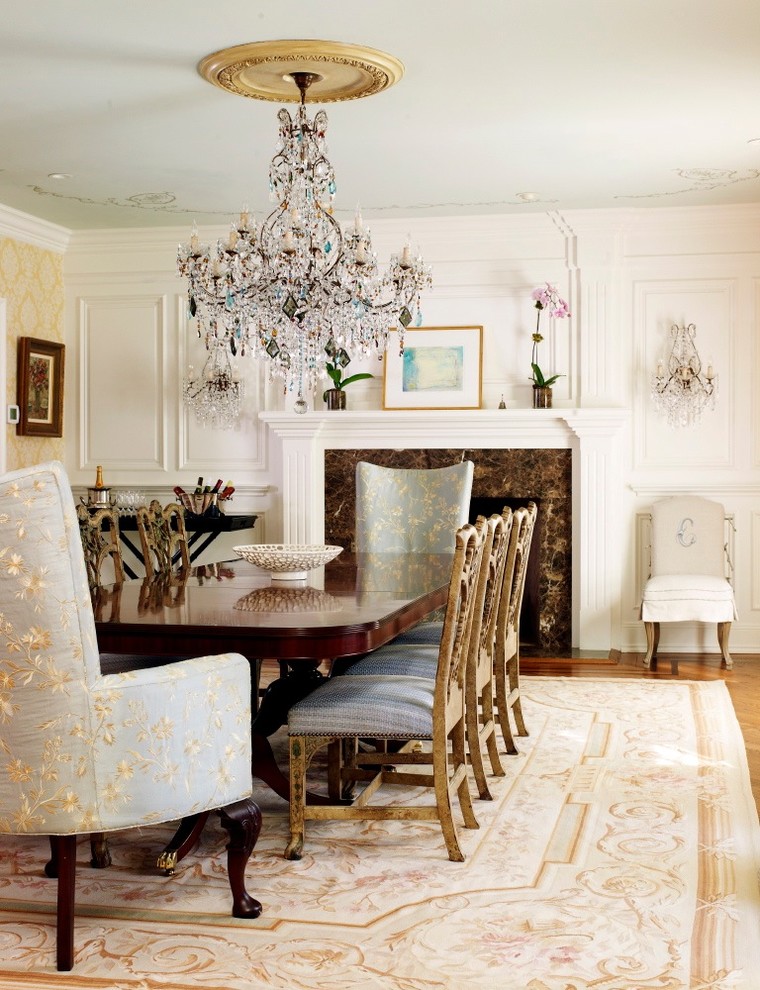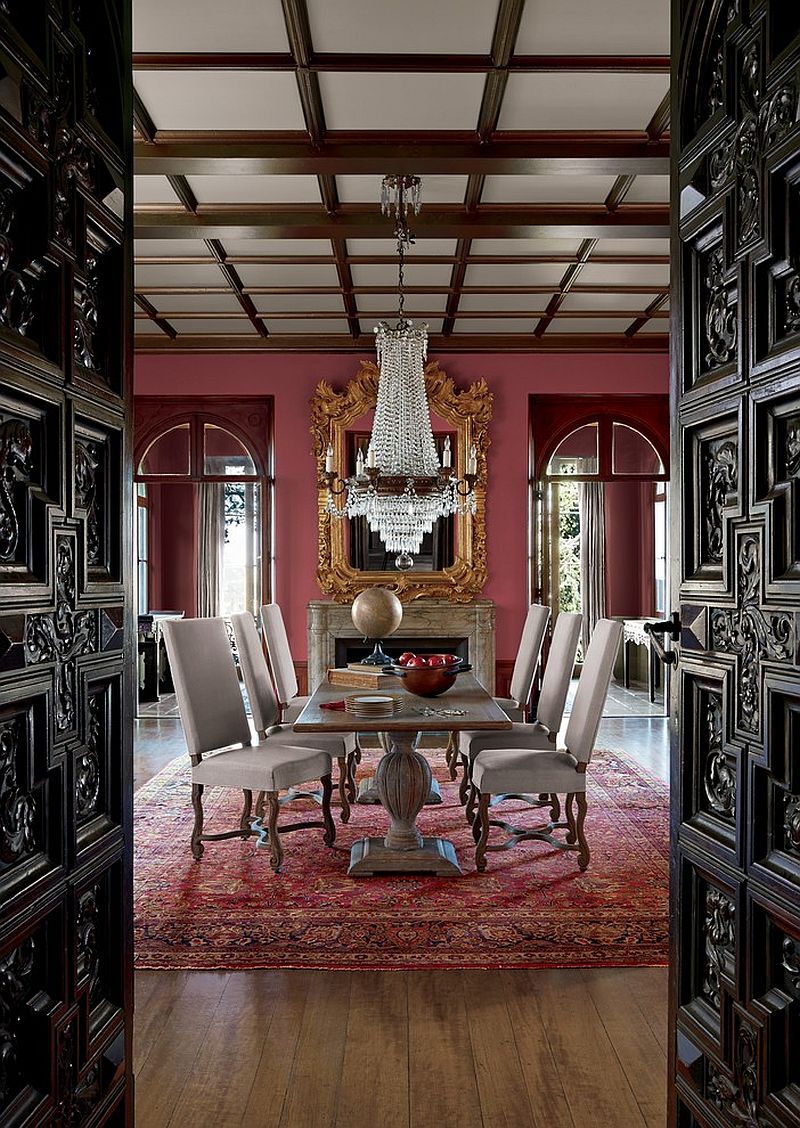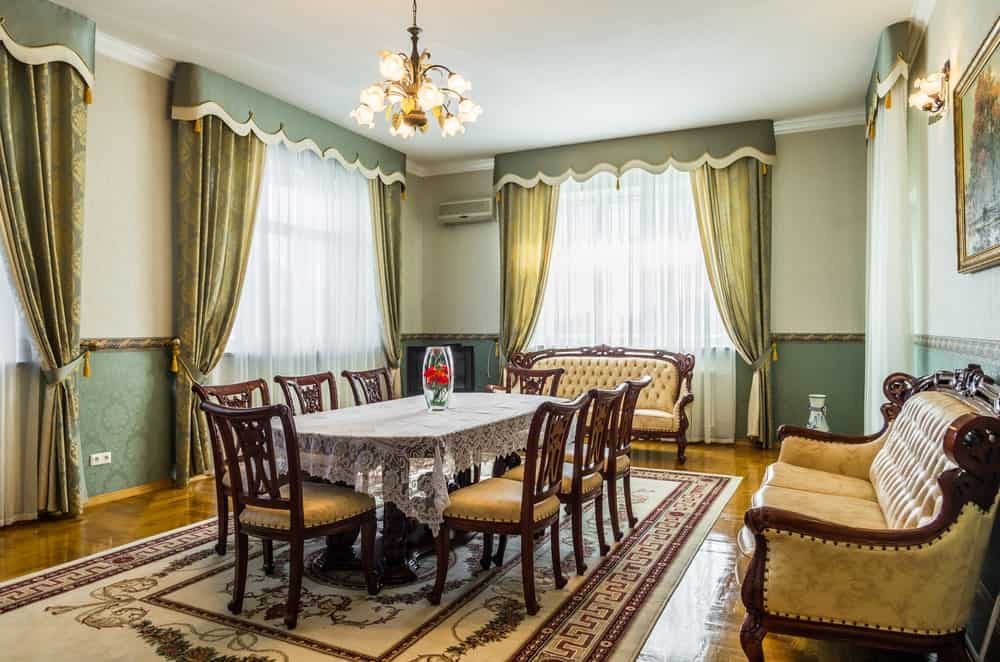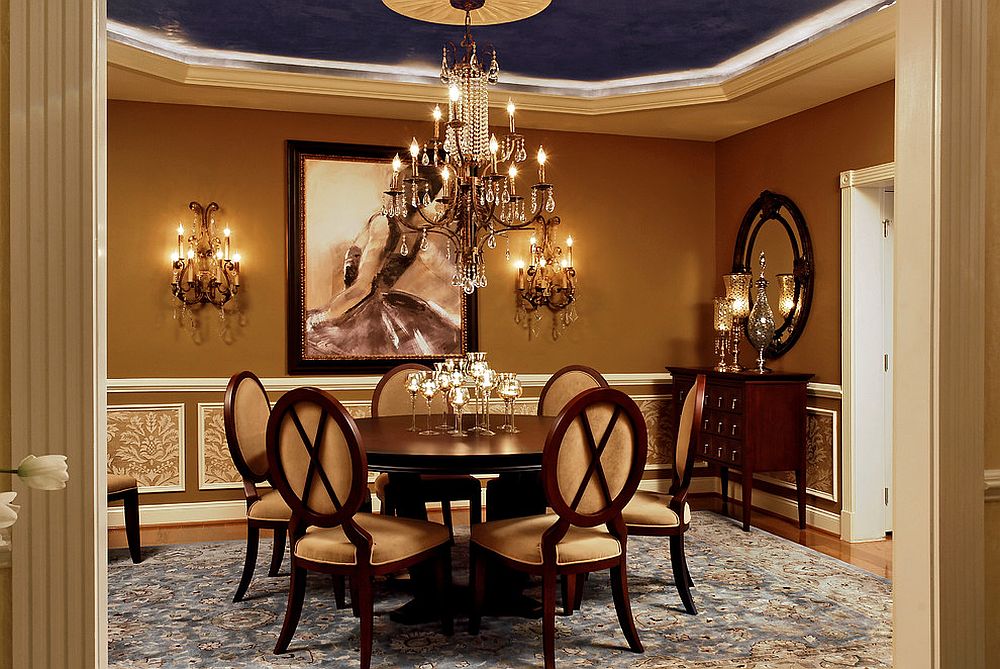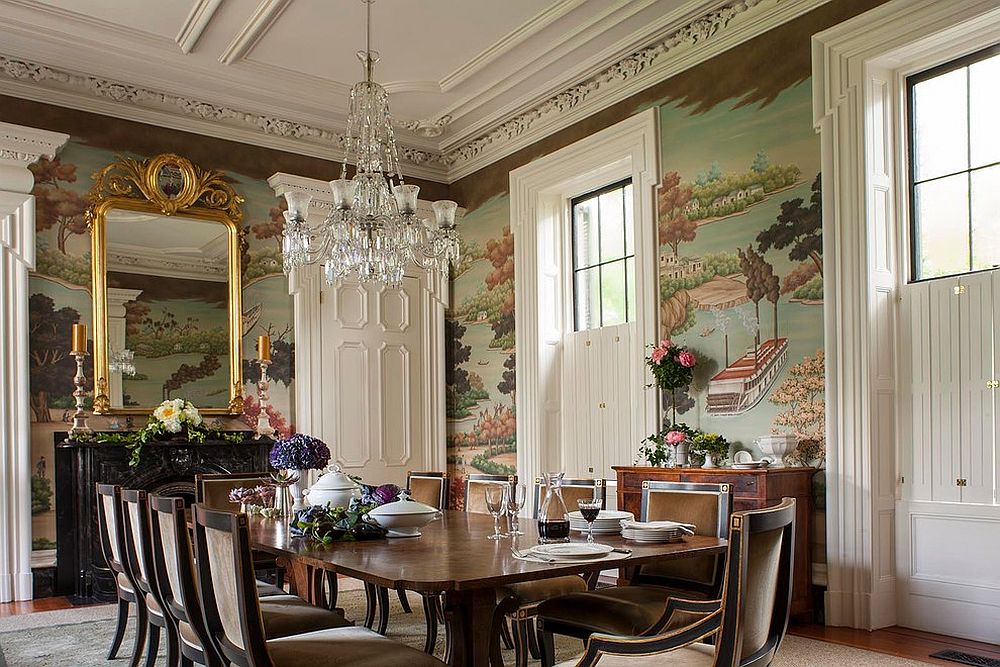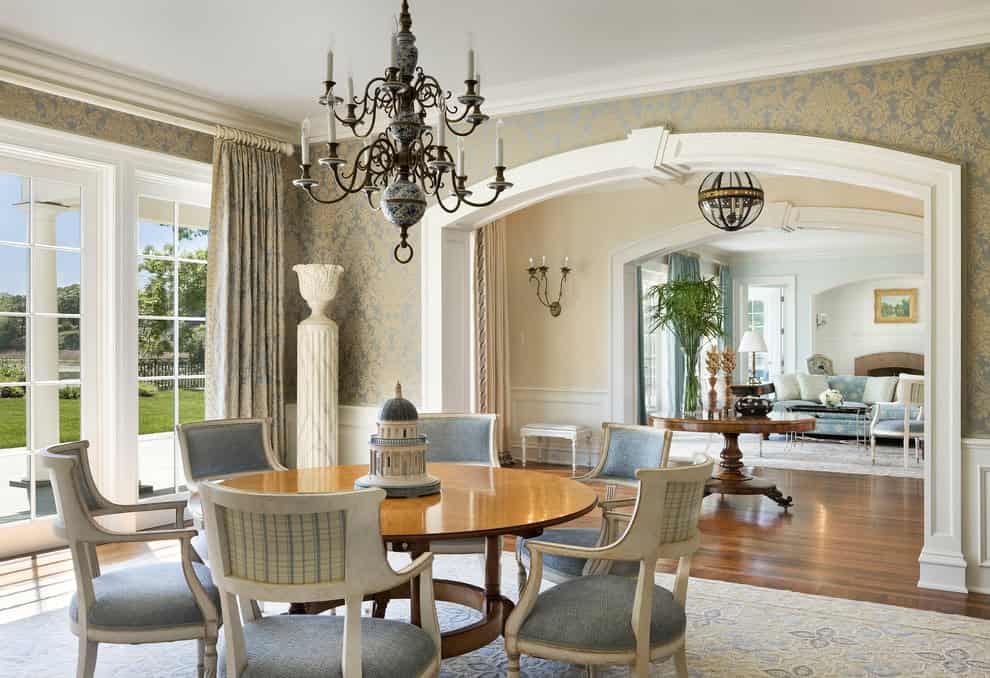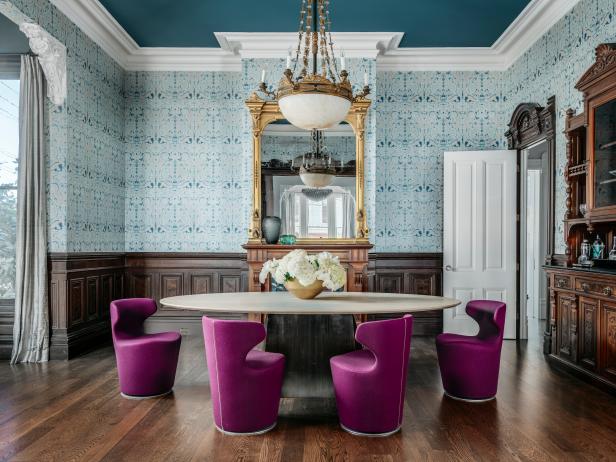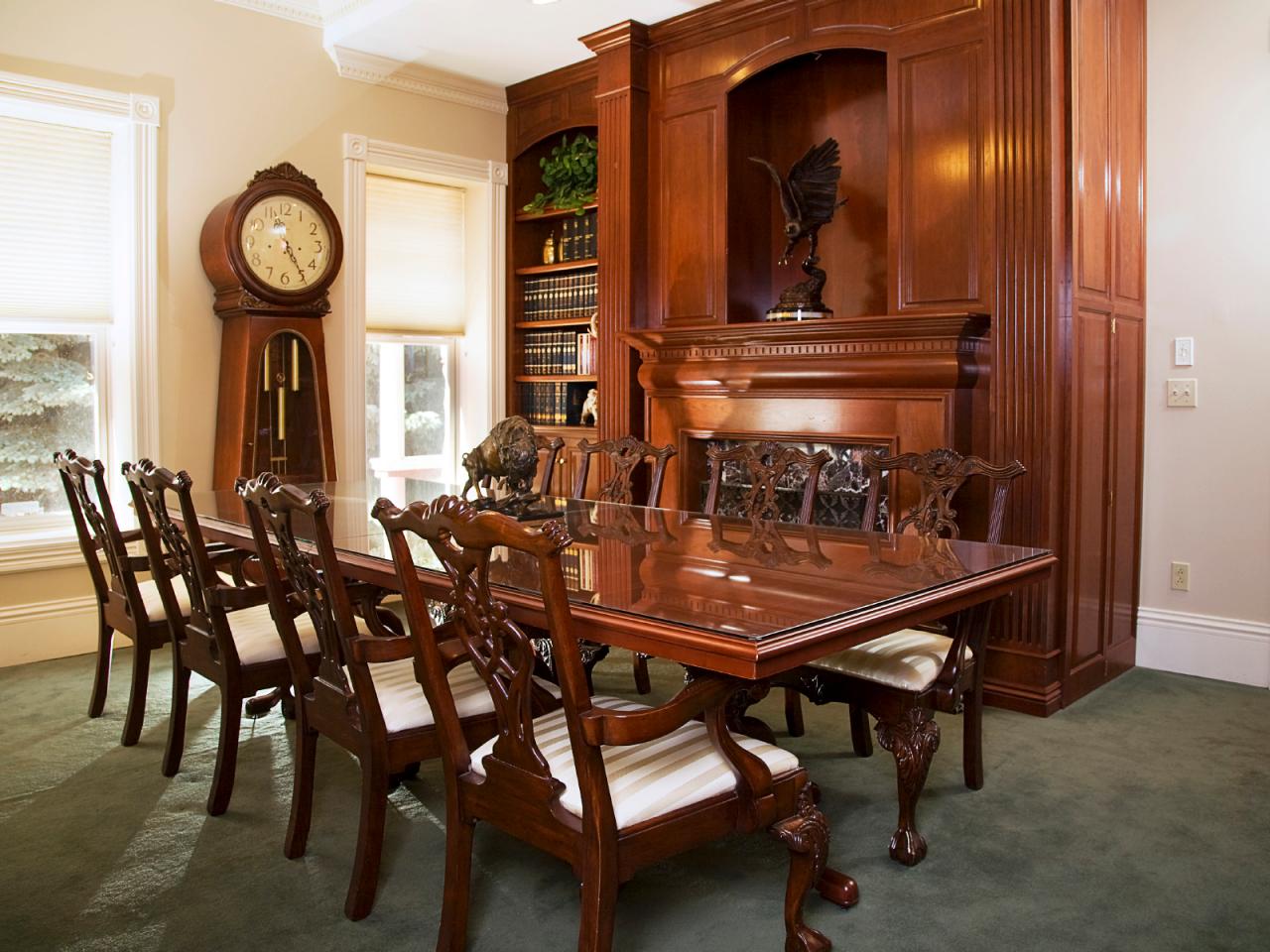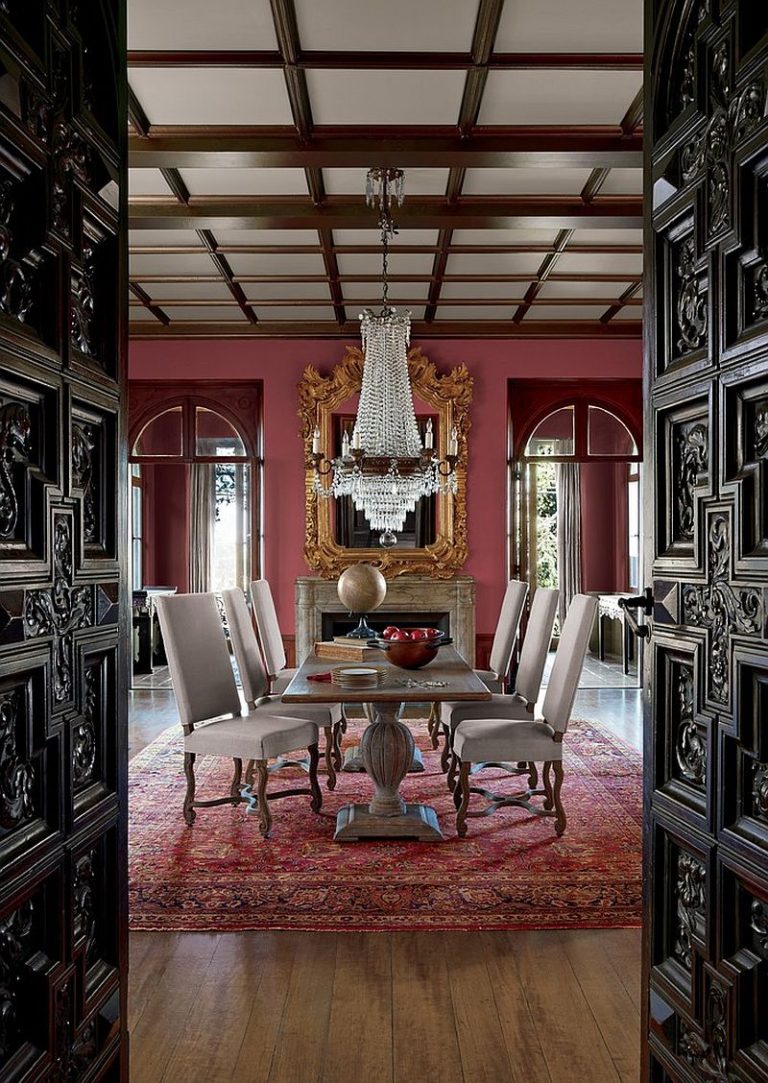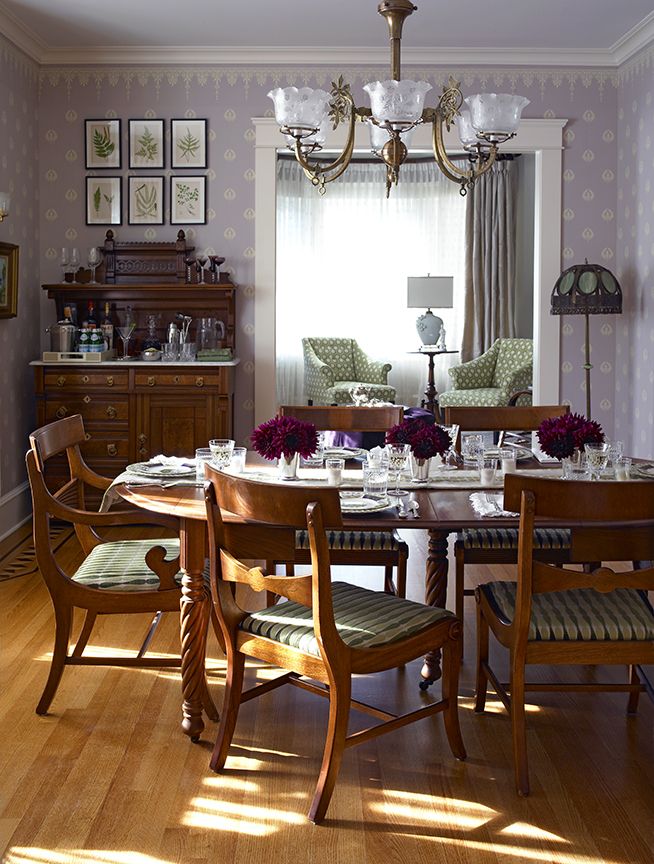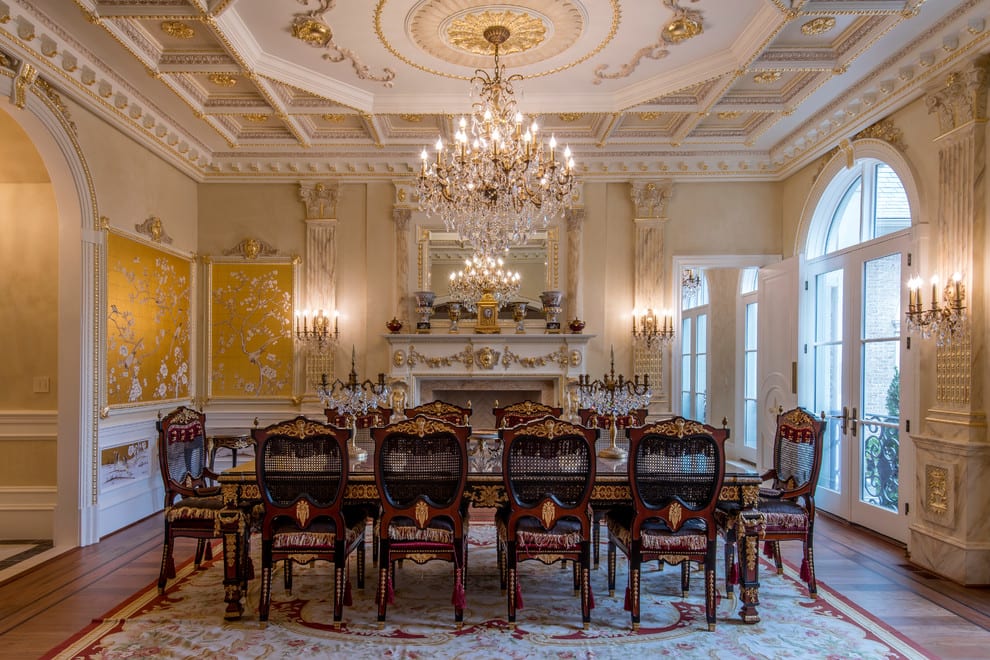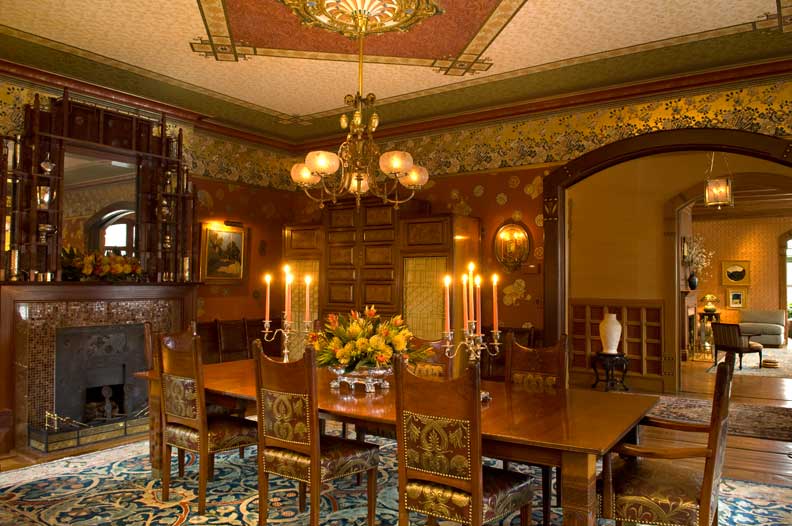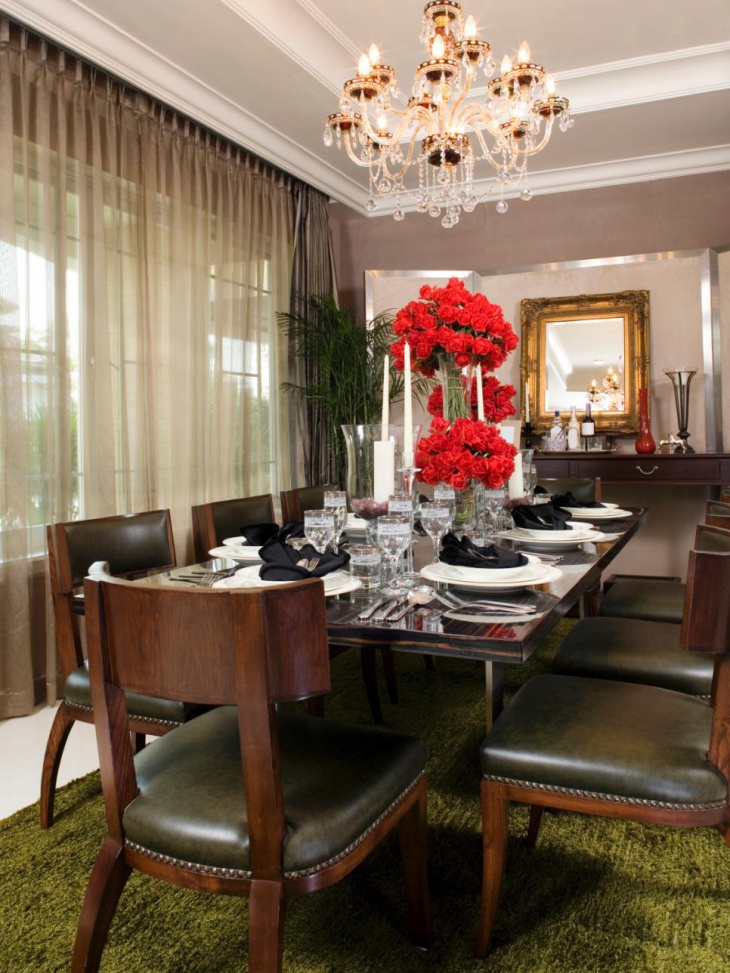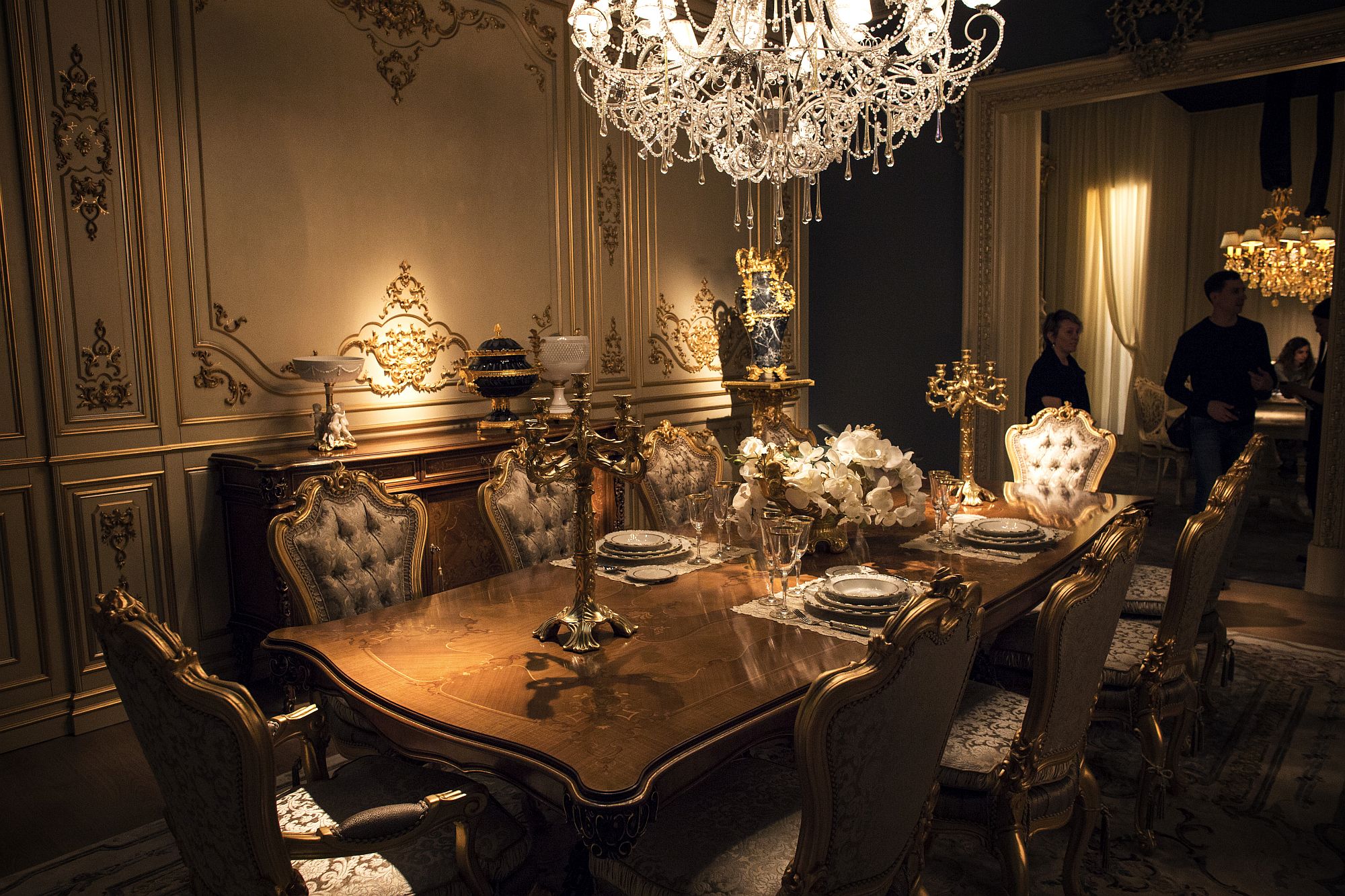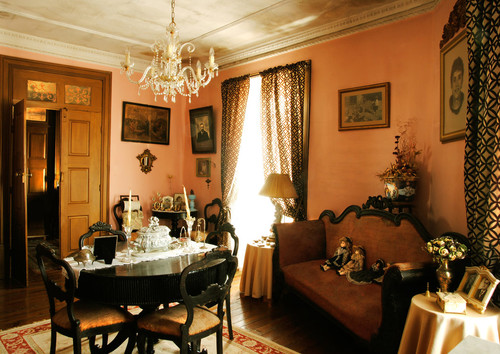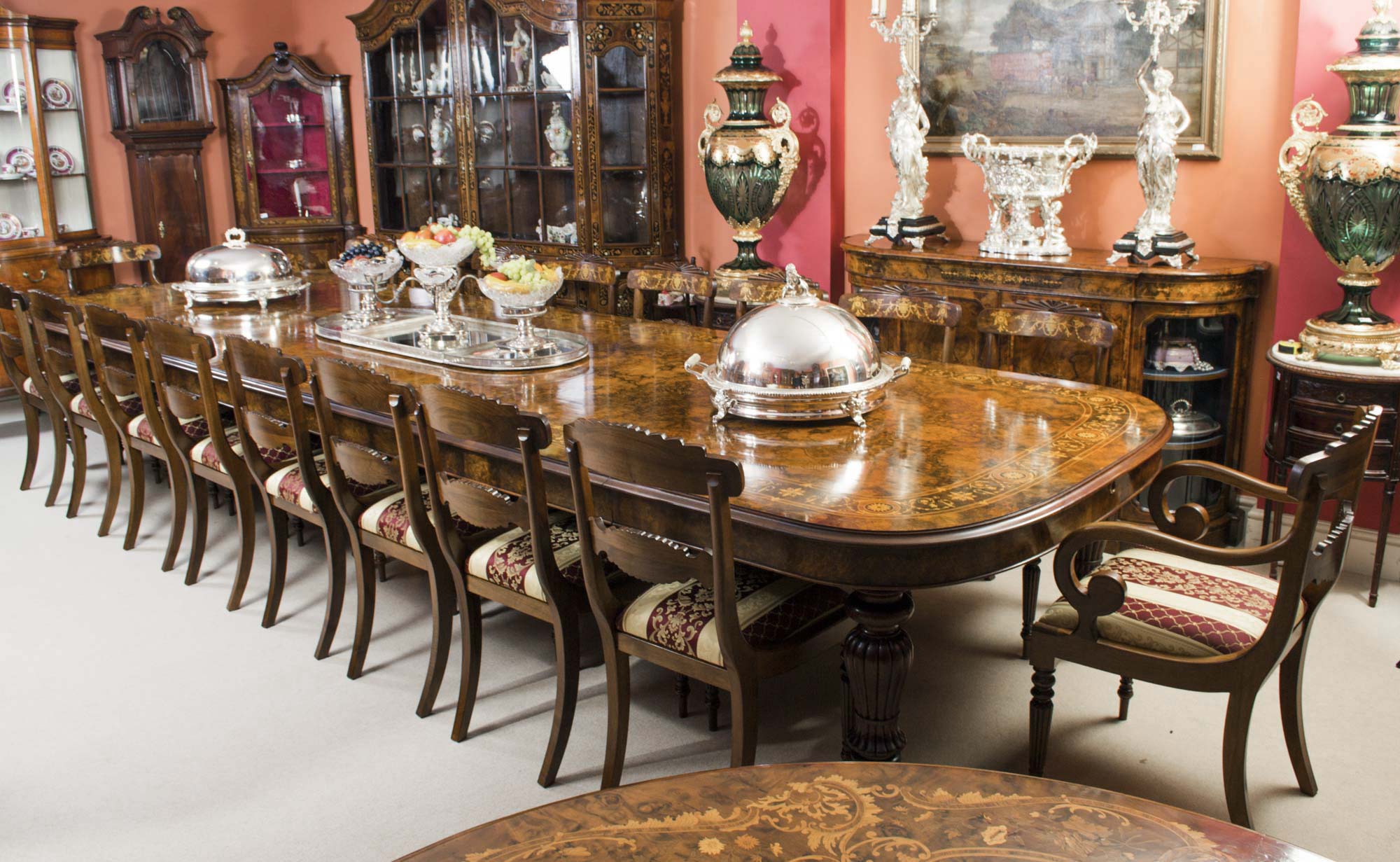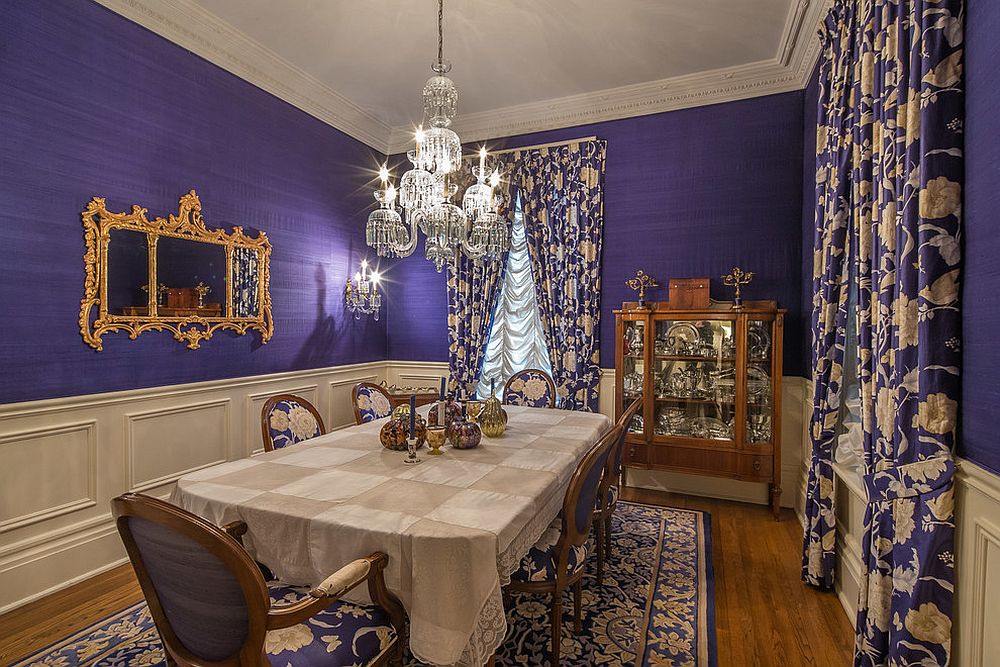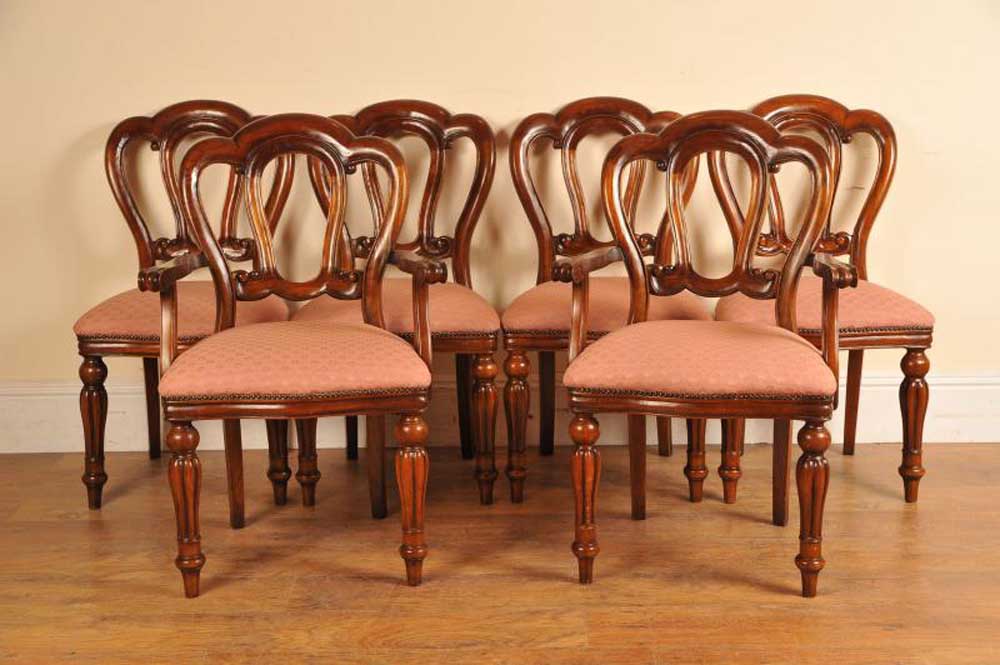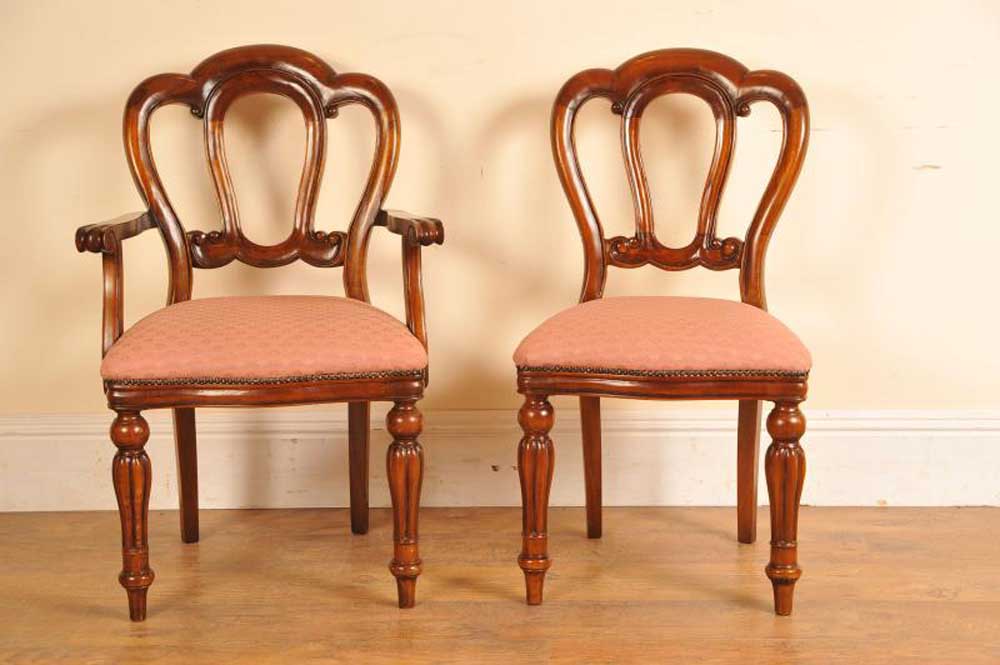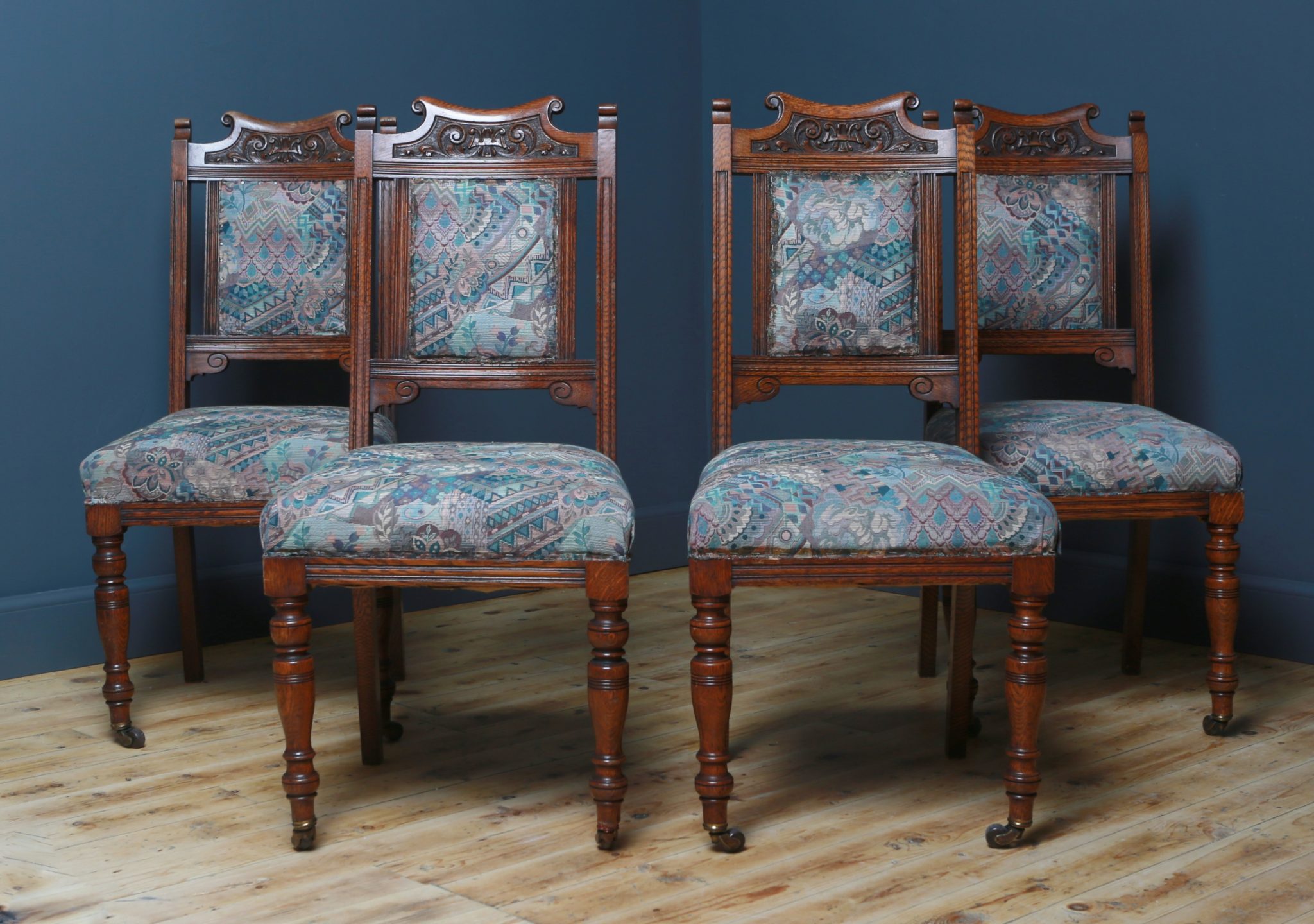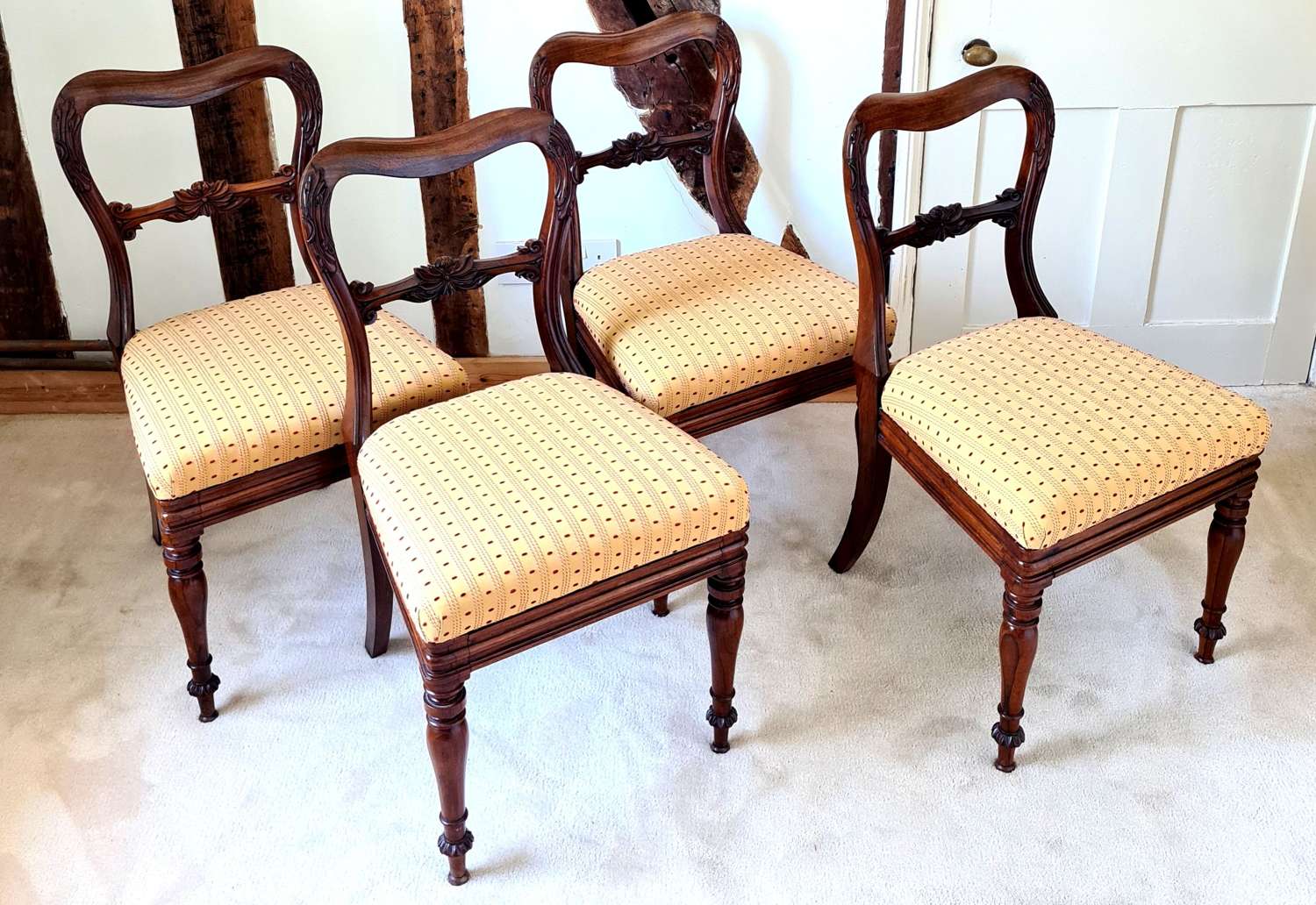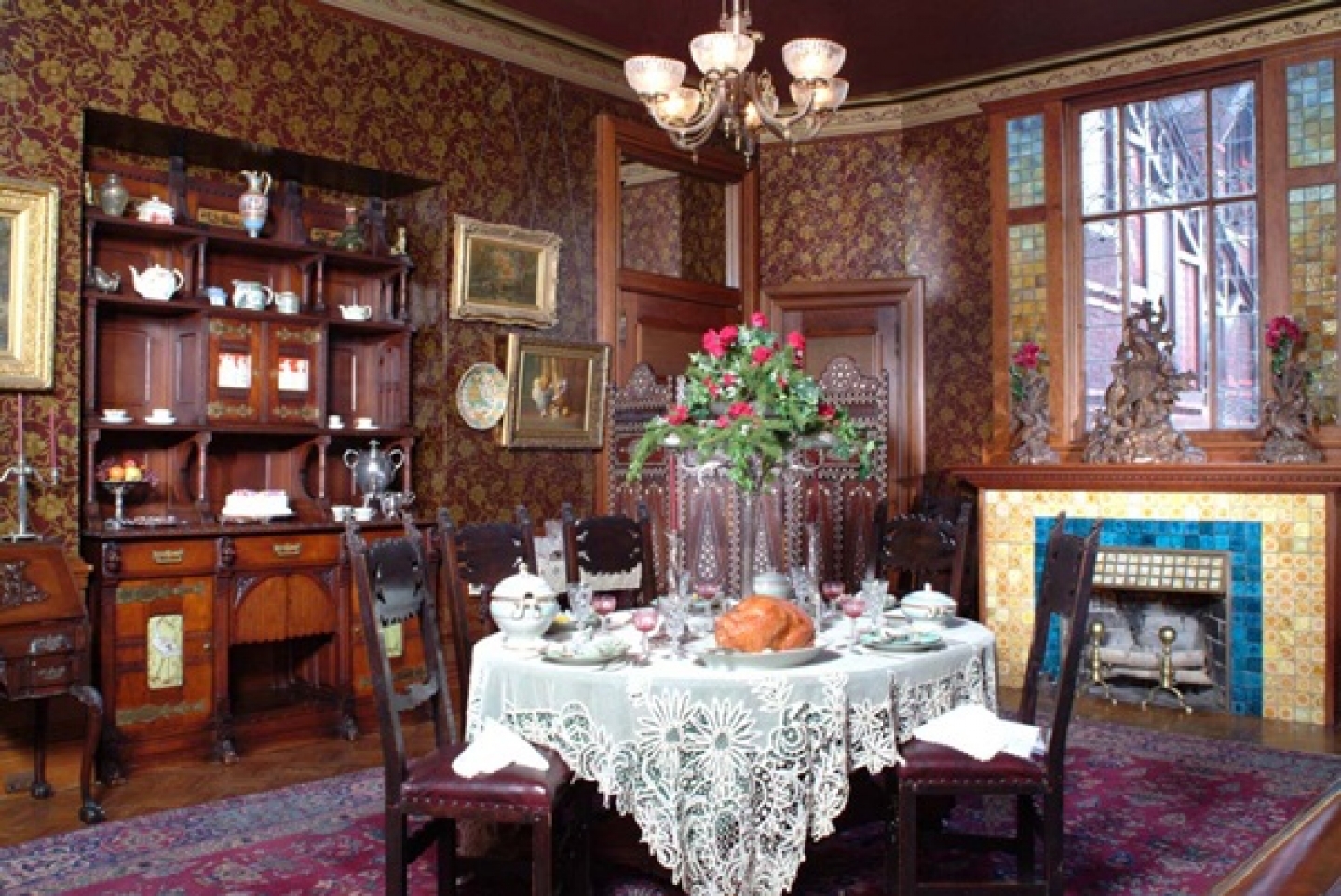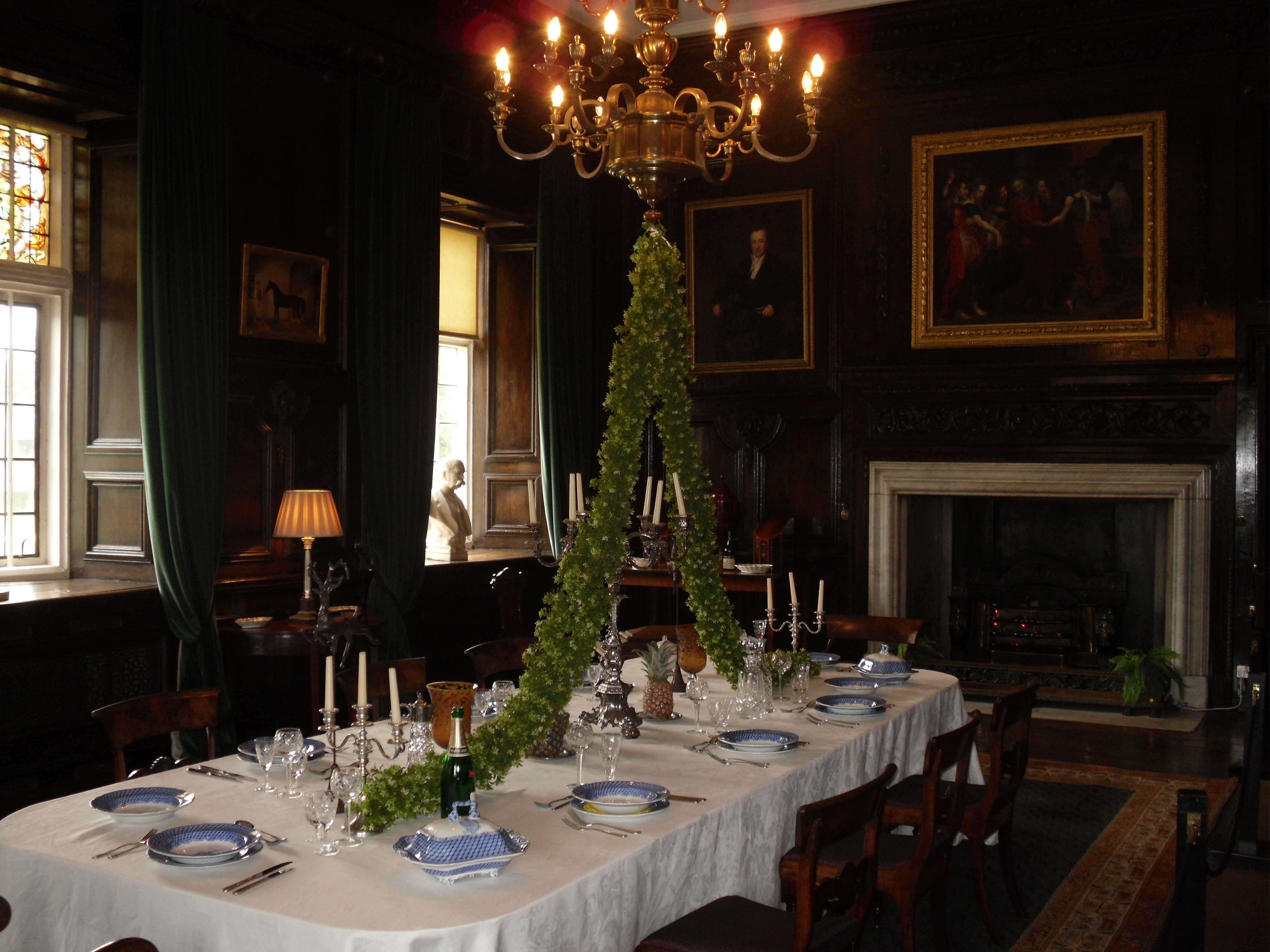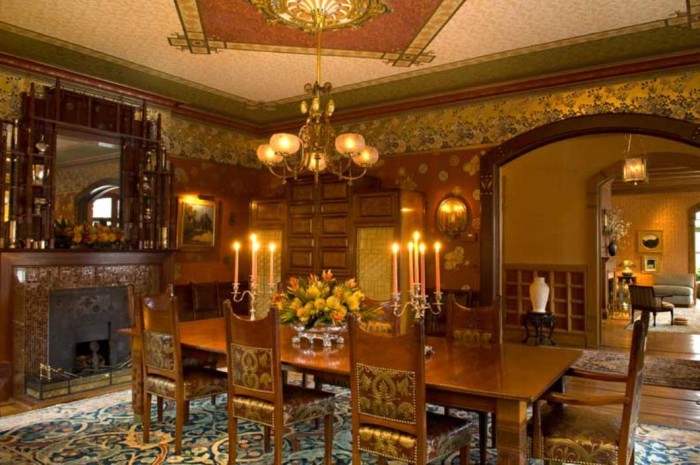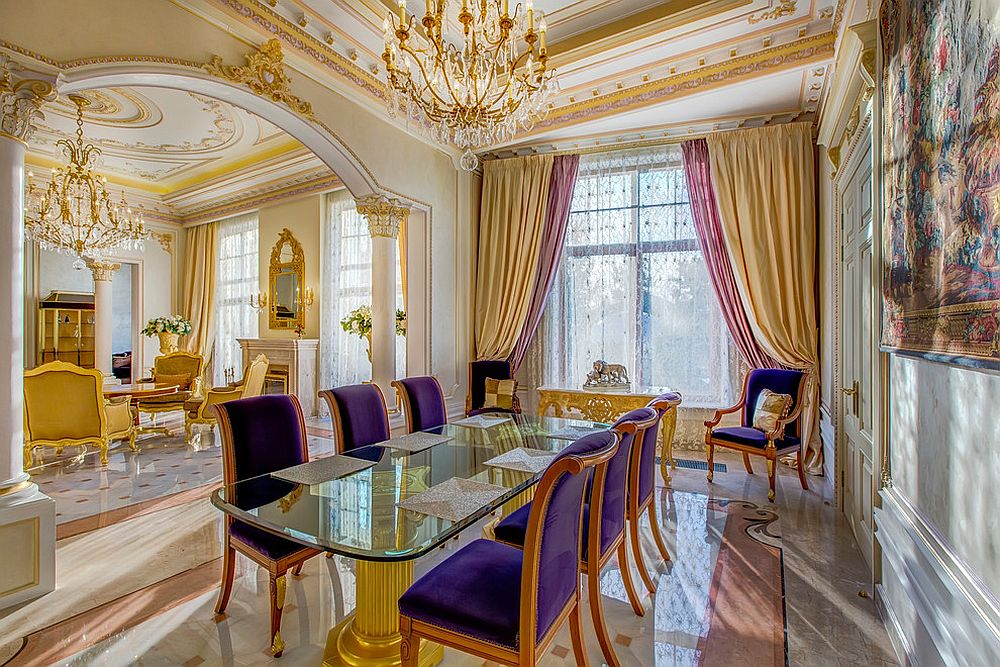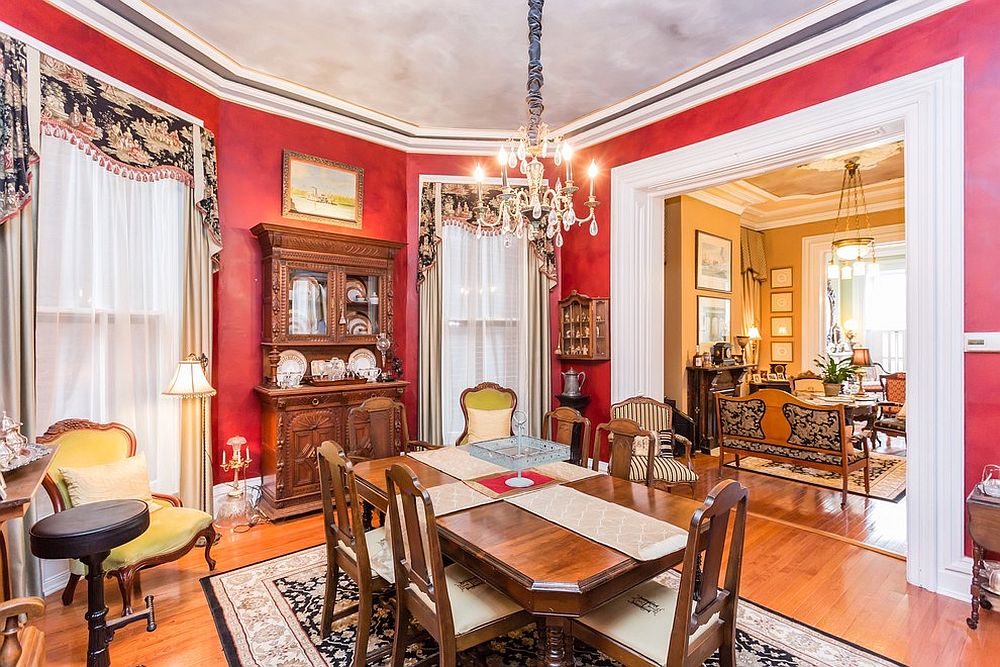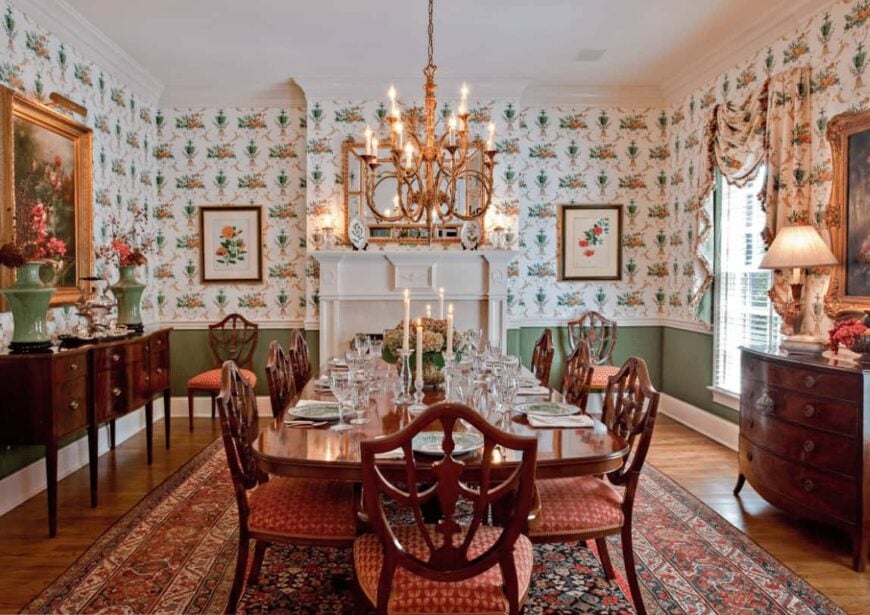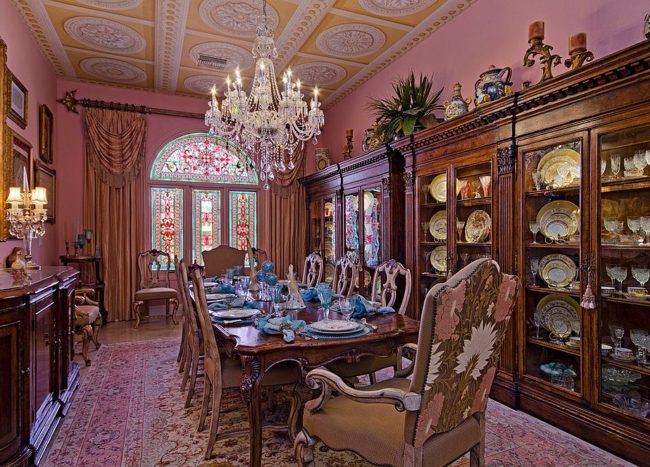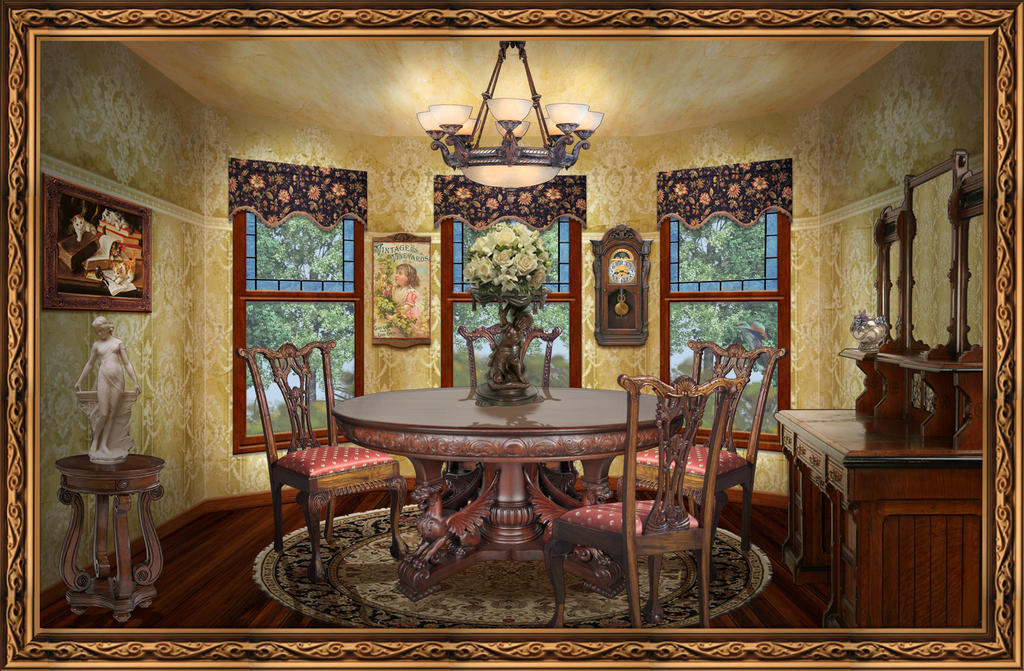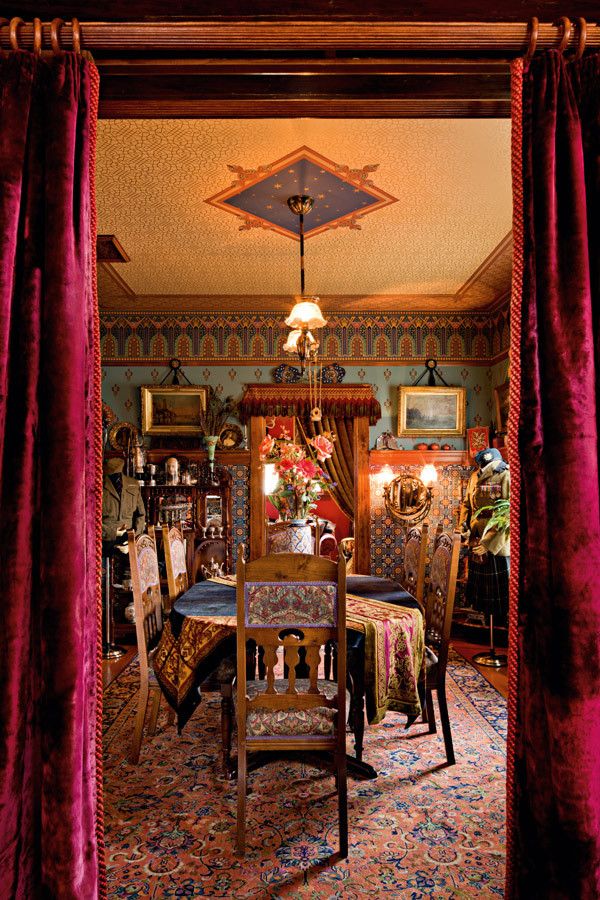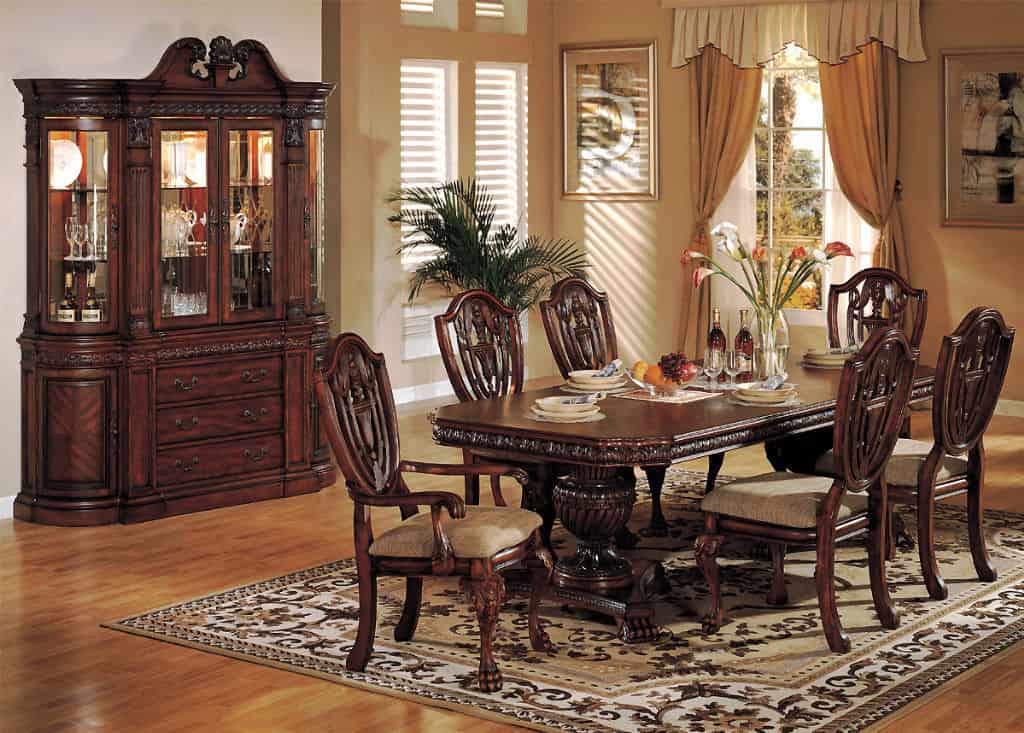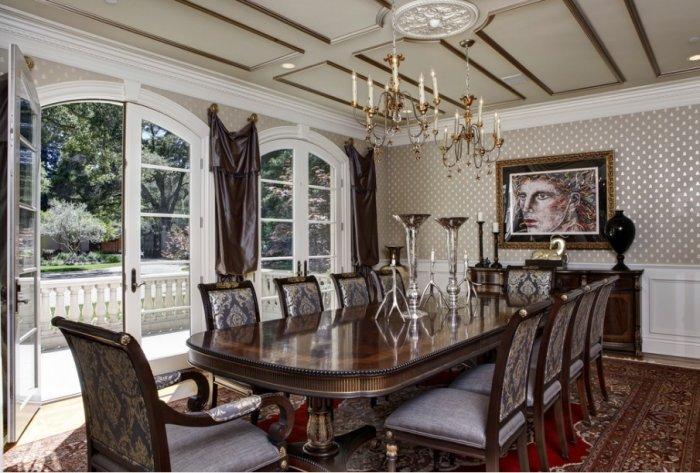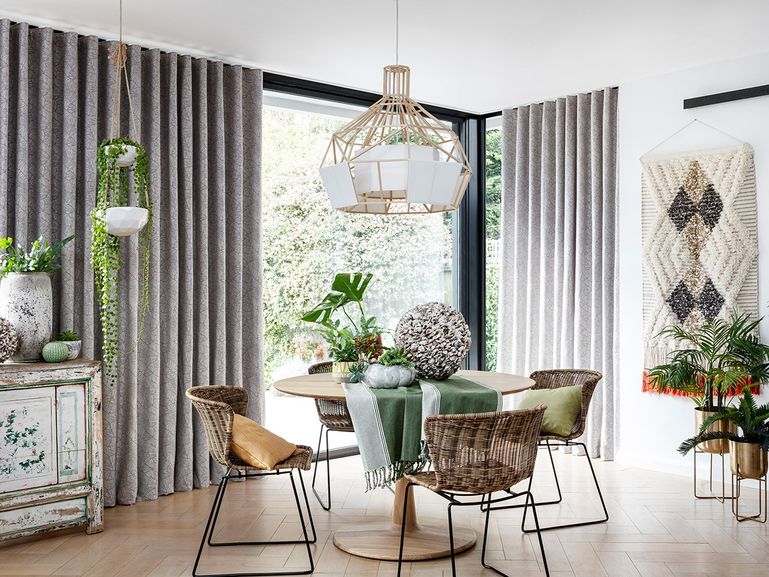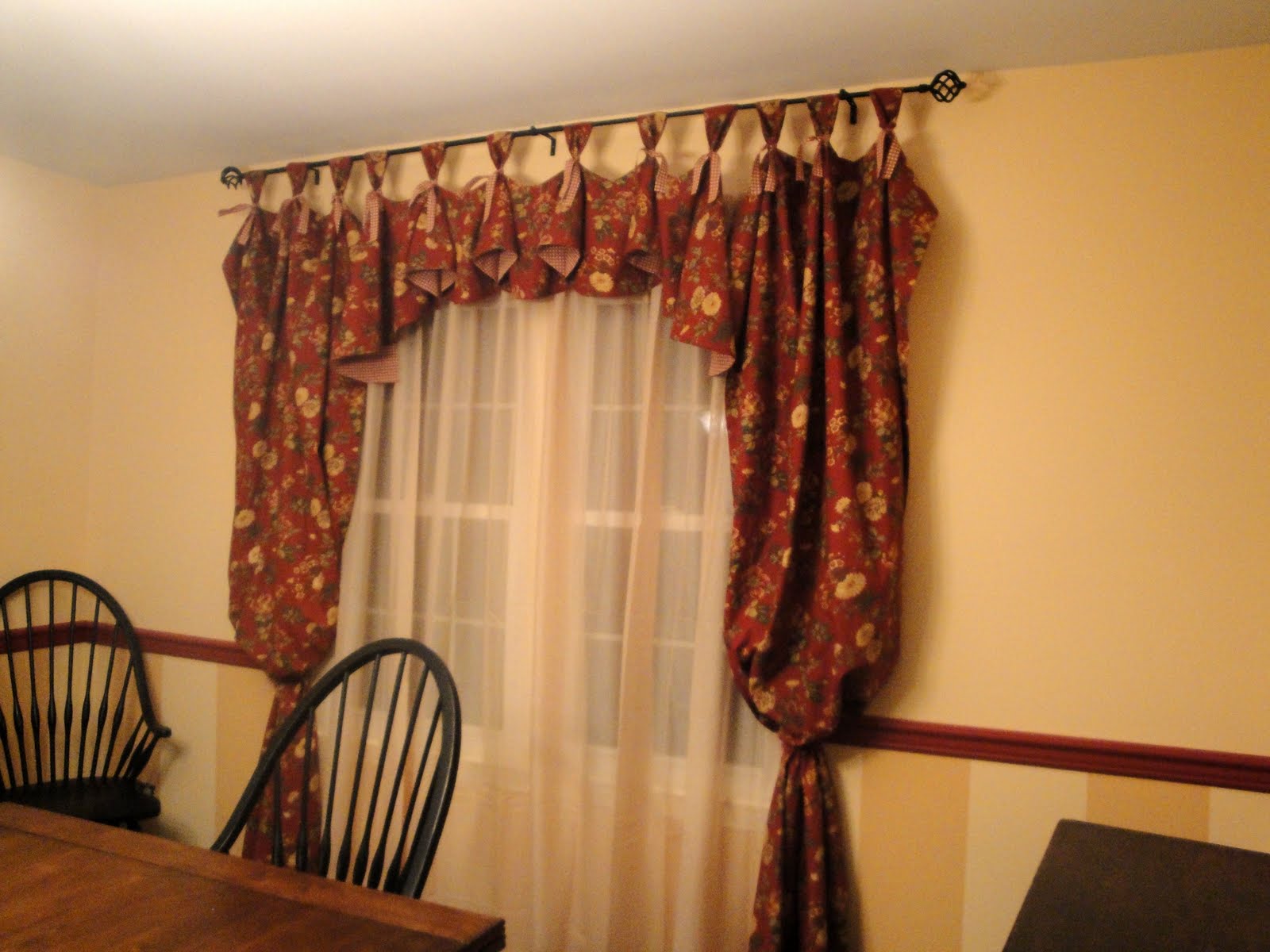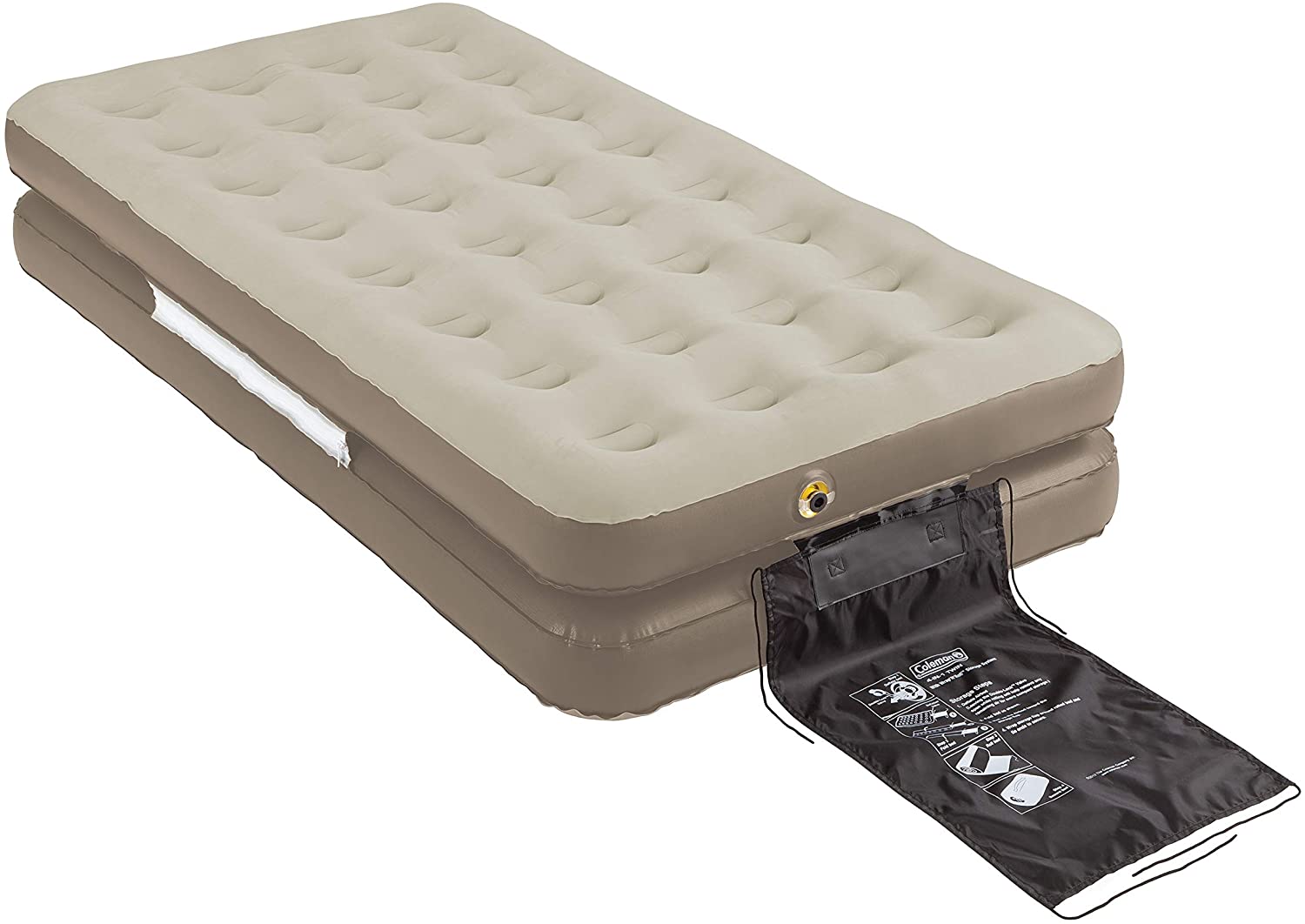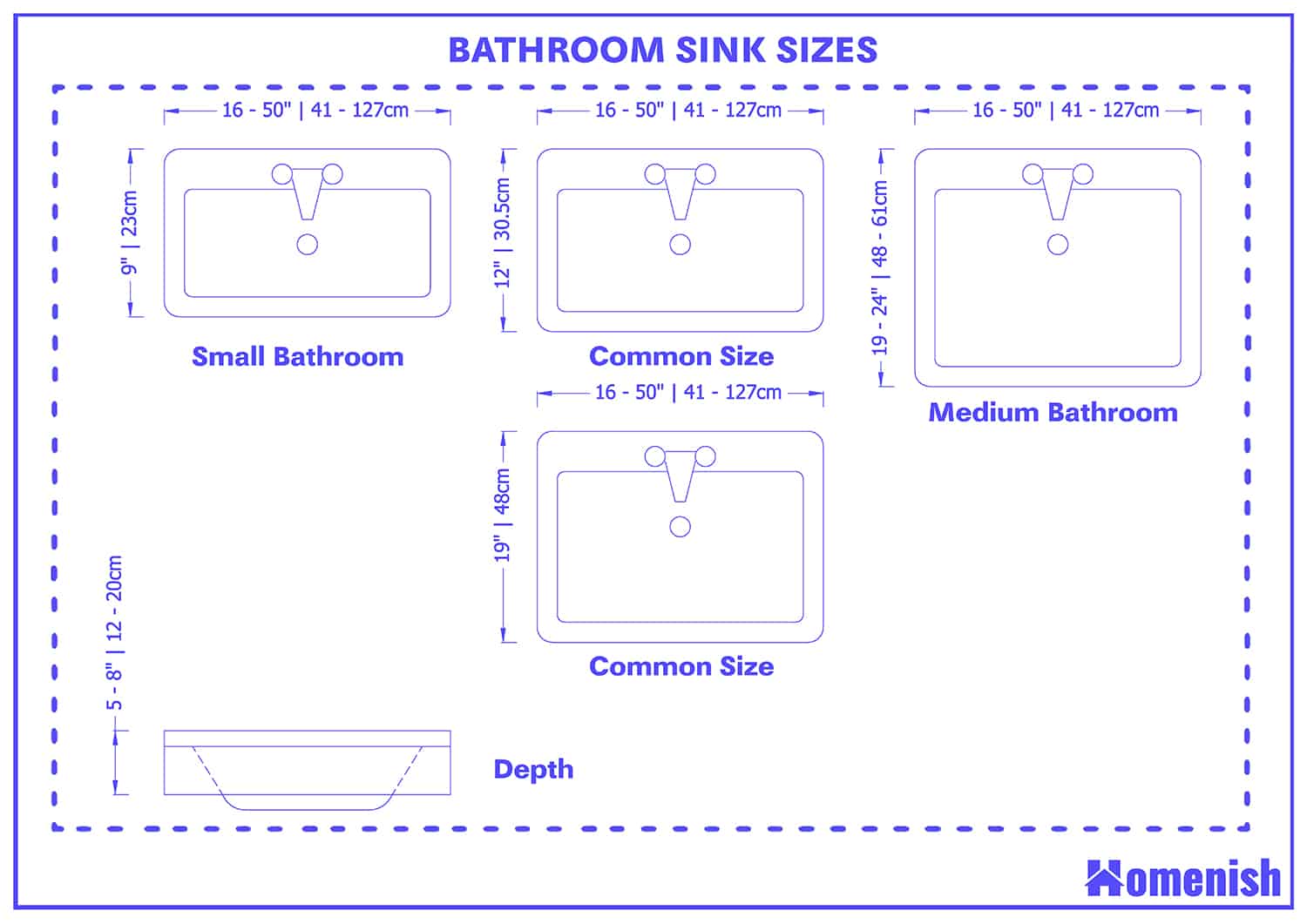The Victorian era was known for its extravagant and opulent designs, and the dining room was no exception. If you're looking to bring a touch of old-world charm to your home, here are some Victorian dining room design ideas to inspire you. Vintage Charm: To truly capture the essence of a Victorian dining room, opt for vintage or antique furniture pieces. Look for intricately carved wooden tables and chairs, and don't be afraid to mix and match different styles for a more eclectic look. Rich Colors: Victorian dining rooms were often adorned with rich and bold colors, such as deep reds, purples, and greens. These colors not only added a sense of luxury, but they also helped to create a cozy and intimate atmosphere. Elaborate Wallpaper: Another key feature of Victorian dining rooms was the use of elaborate wallpaper. Look for patterns with intricate designs, such as damask or floral prints, to add a touch of sophistication to your dining space.Victorian Dining Room Design Ideas
When it comes to furnishing your Victorian dining room, there are a few key pieces that you don't want to overlook. Dining Room Table: The centerpiece of any dining room is, of course, the table. In Victorian times, the dining table was often long and rectangular, with intricate carvings and details. Look for tables with ornate legs and a dark wood finish for an authentic Victorian feel. Dining Room Chairs: Victorian dining chairs were typically made of wood and featured upholstered seats and backs. Look for chairs with curved legs and carved details, and opt for rich velvet or brocade fabrics for a luxurious touch. Sideboard or Buffet: A sideboard or buffet was a common feature in Victorian dining rooms, used for storing and displaying dishes and serving pieces. Look for one with ornate carvings and a dark wood finish to complement your dining table and chairs.Victorian Dining Room Furniture
When it comes to decorating your Victorian dining room, it's all about the details. Here are some ideas to add that extra touch of Victorian charm to your space. Chandelier: No Victorian dining room would be complete without a grand and elaborate chandelier. Look for one with crystal accents and multiple tiers to add a touch of glamour to your dining space. Wall Art: Victorian dining rooms often featured large, ornate paintings or portraits as the focal point of the room. Look for pieces with gold frames and intricate details to add a touch of elegance to your walls. Table Settings: In Victorian times, dining was seen as a formal affair, and table settings were no exception. Invest in some fine china, crystal glasses, and silverware to create a truly authentic Victorian dining experience.Victorian Dining Room Decor
A chandelier is an essential element in any Victorian dining room. Here are some tips for choosing the perfect one for your space. Size: When it comes to chandeliers, bigger is often better in a Victorian dining room. Look for one that is large enough to make a statement, but not so big that it overwhelms the space. Materials: A Victorian dining room chandelier should be made of high-quality materials, such as crystal or brass. Avoid anything too modern or minimalist, as it won't fit with the overall aesthetic of the room. Placement: The chandelier should be centered over the dining table and hung at a height that allows for comfortable conversation and enough clearance for taller guests.Victorian Dining Room Chandelier
The dining table is the heart of the Victorian dining room, so it's important to choose one that not only looks beautiful but also functions well for everyday use. Shape: As mentioned before, rectangular tables were the most common shape for Victorian dining rooms. However, if you have a smaller space, you can opt for a round or oval table to save on space while still maintaining the Victorian aesthetic. Extensions: If you frequently host larger gatherings, consider investing in a dining table with extensions. This will allow you to accommodate more guests while still maintaining the overall look and feel of your Victorian dining room. Tablecloth: Complete the look of your dining table with a luxurious tablecloth. Look for one with lace or embroidered details for an added touch of Victorian charm.Victorian Dining Room Table
When choosing chairs for your Victorian dining room, it's important to find a balance between form and function. Comfort: While Victorian furniture may look elegant and ornate, it's essential to choose chairs that are also comfortable to sit on for extended periods. Look for chairs with padded seats and backs, and consider adding cushions for added comfort. Matching or Mismatched: In true Victorian fashion, you can mix and match different chair styles for a more eclectic look. However, if you prefer a more uniform look, opt for matching chairs in the same style and fabric. Upholstery: Victorian dining chairs were typically upholstered in rich fabrics such as velvet, silk, or brocade. These fabrics not only added a touch of luxury but also helped to insulate the chairs during colder months.Victorian Dining Room Chairs
Wallpaper was a popular choice for Victorian dining rooms, and it's an easy way to add character and charm to your space. Patterns: Look for wallpaper with intricate patterns, such as paisley, damask, or floral designs. These patterns will add depth and texture to your walls and complement the other elements in your dining room. Colors: As mentioned before, Victorian dining rooms were known for their rich and bold colors. Don't be afraid to choose wallpaper in deep reds, greens, or purples to add a touch of drama to your space. Accent Wall: If you're hesitant about using wallpaper on all four walls, consider creating an accent wall behind your dining table. This will add visual interest without overwhelming the space.Victorian Dining Room Wallpaper
When it comes to choosing colors for your Victorian dining room, there are a few key things to keep in mind. Rich and Bold: As mentioned throughout this article, Victorian dining rooms were known for their rich and bold colors. These colors not only added a sense of luxury but also helped to create a warm and inviting atmosphere. Complementary Colors: When choosing colors for your dining room, it's important to consider the other elements in the room, such as furniture and decor. Look for colors that complement each other, such as deep reds and golds or greens and blues. Accent Colors: While it's best to stick with a few main colors for your Victorian dining room, you can also add pops of accent colors for added visual interest. This can be done through accessories such as curtains, rugs, or table settings.Victorian Dining Room Colors
In addition to a grand chandelier, there are other lighting elements you can add to your Victorian dining room to create a warm and inviting ambiance. Wall Sconces: Wall sconces were a common feature in Victorian dining rooms, used to add extra lighting and to highlight artwork or other decorative elements on the walls. Look for sconces with intricate details and a vintage or antique finish. Candles: For a more romantic and intimate dining experience, consider adding candles to your table or around the room. This will not only add to the overall ambiance but also give a nod to Victorian times when candles were a primary source of lighting. Dimmer Switch: Installing a dimmer switch for your dining room lights will allow you to adjust the lighting to suit different occasions, whether it's a fancy dinner party or a cozy family meal.Victorian Dining Room Lighting
To complete the look of your Victorian dining room, consider adding curtains or drapes to your windows. Here are some tips for choosing the perfect ones. Heavy Fabrics: Victorian curtains were often made of heavy fabrics such as velvet or brocade, which not only added to the overall aesthetic but also helped to insulate the room during colder months. Rich Colors: As with other elements in the room, choose curtains in rich and bold colors to add a touch of luxury to your dining space. Length: Victorian curtains were typically floor-length, sometimes even pooling on the ground for added drama. Keep this in mind when choosing the length of your curtains for an authentic Victorian look. In conclusion, creating a Victorian dining room is all about incorporating elements of opulence, luxury, and old-world charm. By following these design ideas and tips, you can transform your dining space into a grand and elegant room fit for a queen (or king!).Victorian Dining Room Curtains
The Elegance of a Victorian English Dining Room

The History of Victorian English Dining Rooms
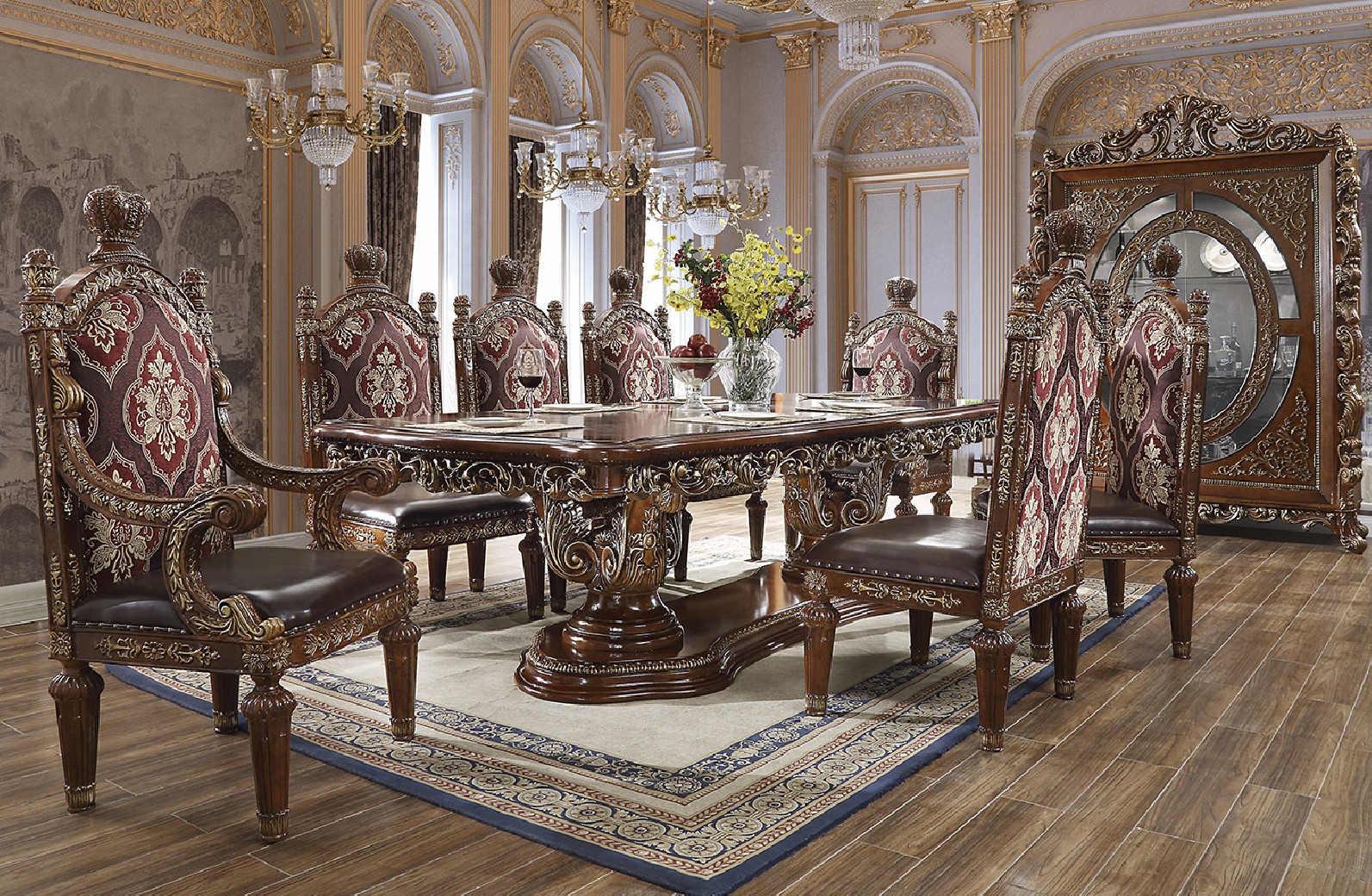 The Victorian era, spanning from 1837 to 1901, was a time of elegance and opulence in England. This was reflected in the design of the homes, particularly in the dining room. The Victorian English dining room was not just a place to eat, but a symbol of social status and wealth. It was a room that represented the refinement and sophistication of the upper class. The design of the dining room during this time was heavily influenced by the Victorian aesthetic, which focused on ornate details, rich colors, and lavish furnishings. Let's take a closer look at the elements that make up a Victorian English dining room.
The Victorian era, spanning from 1837 to 1901, was a time of elegance and opulence in England. This was reflected in the design of the homes, particularly in the dining room. The Victorian English dining room was not just a place to eat, but a symbol of social status and wealth. It was a room that represented the refinement and sophistication of the upper class. The design of the dining room during this time was heavily influenced by the Victorian aesthetic, which focused on ornate details, rich colors, and lavish furnishings. Let's take a closer look at the elements that make up a Victorian English dining room.
The Key Elements of a Victorian English Dining Room
 Rich Colors:
One of the defining features of a Victorian English dining room is the use of rich and bold colors. Deep reds, greens, and blues were popular choices for wall colors, creating a sense of warmth and coziness in the room. These colors were often paired with luxurious wallpaper featuring intricate patterns or floral designs.
Ornate Details:
Another characteristic of a Victorian English dining room is the use of ornate details in the furniture and decor. Tables and chairs were often made of dark wood and featured intricate carving and detailing. The dining table would typically be adorned with a tablecloth, and the chairs would have upholstered seats with elaborate patterns.
Lavish Furnishings:
The Victorian era was all about excess, and this was evident in the furnishings of the dining room. Chandeliers, candelabras, and other decorative lighting fixtures were commonly found in Victorian dining rooms, adding a touch of grandeur to the space. The use of luxurious fabrics such as velvet and silk for curtains and draperies also added to the overall opulence of the room.
Rich Colors:
One of the defining features of a Victorian English dining room is the use of rich and bold colors. Deep reds, greens, and blues were popular choices for wall colors, creating a sense of warmth and coziness in the room. These colors were often paired with luxurious wallpaper featuring intricate patterns or floral designs.
Ornate Details:
Another characteristic of a Victorian English dining room is the use of ornate details in the furniture and decor. Tables and chairs were often made of dark wood and featured intricate carving and detailing. The dining table would typically be adorned with a tablecloth, and the chairs would have upholstered seats with elaborate patterns.
Lavish Furnishings:
The Victorian era was all about excess, and this was evident in the furnishings of the dining room. Chandeliers, candelabras, and other decorative lighting fixtures were commonly found in Victorian dining rooms, adding a touch of grandeur to the space. The use of luxurious fabrics such as velvet and silk for curtains and draperies also added to the overall opulence of the room.
Designing a Victorian English Dining Room Today
 While the Victorian era may be long gone, the elegance and charm of a Victorian English dining room can still be recreated in modern homes. Incorporating rich colors, ornate details, and lavish furnishings are key to achieving this timeless and sophisticated look. Additionally, incorporating antique or vintage pieces, such as a vintage chandelier or dining table, can add an authentic touch to the room. With the right elements and attention to detail, you can create a Victorian English dining room that exudes elegance and sophistication in your own home.
In conclusion, the Victorian English dining room is a symbol of the opulence and refinement of the Victorian era. Its rich colors, ornate details, and lavish furnishings make it a timeless and elegant space that can still be recreated in modern homes. With its focus on elegance and excess, it is no wonder that the Victorian English dining room remains a popular choice for those looking to add a touch of sophistication to their home.
While the Victorian era may be long gone, the elegance and charm of a Victorian English dining room can still be recreated in modern homes. Incorporating rich colors, ornate details, and lavish furnishings are key to achieving this timeless and sophisticated look. Additionally, incorporating antique or vintage pieces, such as a vintage chandelier or dining table, can add an authentic touch to the room. With the right elements and attention to detail, you can create a Victorian English dining room that exudes elegance and sophistication in your own home.
In conclusion, the Victorian English dining room is a symbol of the opulence and refinement of the Victorian era. Its rich colors, ornate details, and lavish furnishings make it a timeless and elegant space that can still be recreated in modern homes. With its focus on elegance and excess, it is no wonder that the Victorian English dining room remains a popular choice for those looking to add a touch of sophistication to their home.
